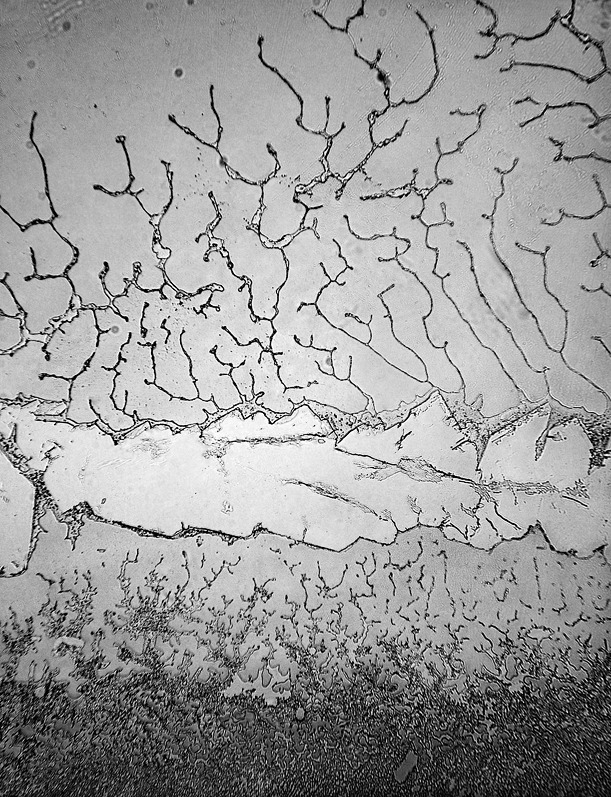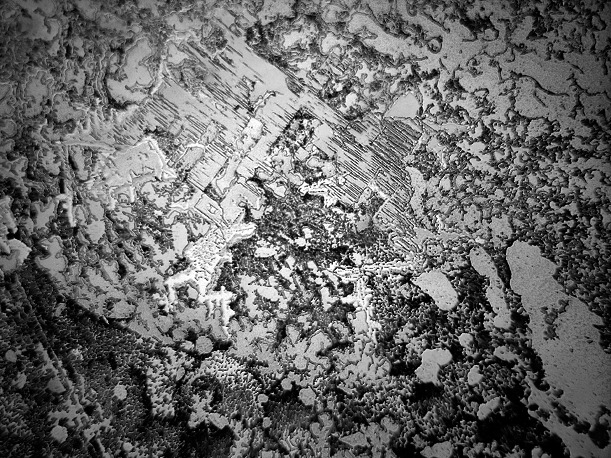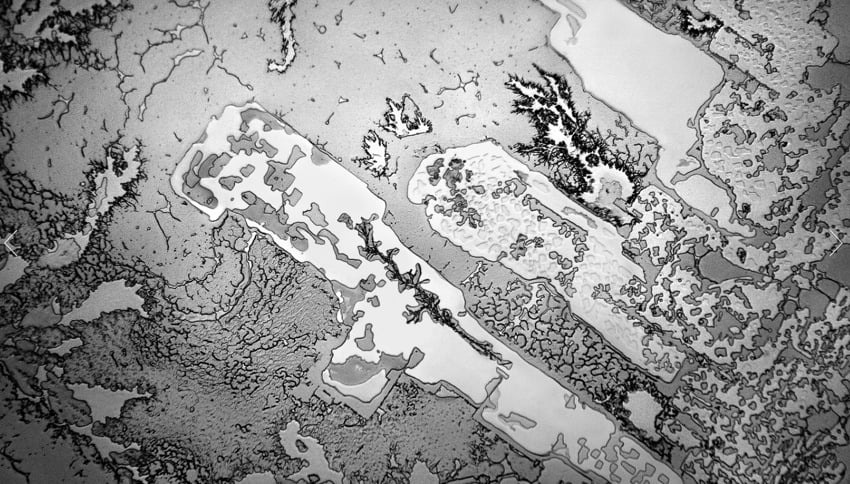
A microscopic journey through human experiences.

In her project titled Topography of Tears, photographer Rose-Lynn Fisher captures tears of joy, laughter and, well, onions in extreme detail – and they are all very different!
“I started the project about five years ago, during a period of copious tears, amid lots of change and loss—so I had a surplus of raw material,” Fisher told Smithsonian. “So I had this moment where I suddenly thought, ‘I wonder what a tear looks like up close?”

After catching one of her tears on a slide, drying it, and examining it through a typical light microscope, she thought “it was really interesting. It looked like an aerial view, almost as if I was looking down at a landscape from a plane,” she said. “Eventually, I started wondering—would a tear of grief look any different than a tear of joy? And how would they compare to, say, an onion tear?”
As a result of this aimless contemplation, Fisher embarked on a photography project that lasted for several years. During this project, she gathered, scrutinized, and captured images of over 100 tears, including her own and those of a few volunteers, including a newborn infant.

Tears are scientifically categorized into three distinct types based on their source. Psychic tears, whether resulting from intense positive or negative emotions, are triggered by feelings of joy or grief. Basal tears, which are responsible for maintaining lubrication in the cornea, are consistently produced in small amounts (averaging 0.75 to 1.1 grams over a 24-hour period). Reflex tears, on the other hand, are released as a response to an irritant, such as tear gas, onion vapors, or dust.
While all tears consist of a mixture of biological substances, such as oils, enzymes, and antibodies, dissolved in saline, Fisher observed that tears from each of the various types also contain unique molecules. For instance, emotional tears are known to contain protein-based hormones, including the neurotransmitter leucine enkephalin, which functions as a natural pain reliever and is released during times of stress.

Furthermore, since the structures visible under the microscope are predominantly composed of crystallized salt, the way a tear dries can cause significant differences in its shape and formation. Consequently, two psychic tears with identical chemical compositions may appear markedly dissimilar when viewed closely.
“There are so many variables—there’s the chemistry, the viscosity, the setting, the evaporation rate and the settings of the microscope,” Fisher explained.

Upon examining the numerous desiccated tears, Fisher discovered further similarities between them and expansive terrains, which she refers to as “aerial views of emotional terrain.”
“It’s amazing to me how the patterns of nature seem so similar, regardless of scale,” she noted. “You can look at patterns of erosion that are etched into earth over thousands of years, and somehow they look very similar to the branched crystalline patterns of a dried tear that took less than a moment to form.”

Fisher’s prolonged examination of tears has led her to view them as something far more complex than a simple salty fluid that we expel during moments of distress.
“Tears are the medium of our most primal language in moments as unrelenting as death, as basic as hunger and as complex as a rite of passage,” she said. “It’s as though each one of our tears carries a microcosm of the collective human experience, like one drop of an ocean.”

A closer look at our emotions.

Leave a Reply